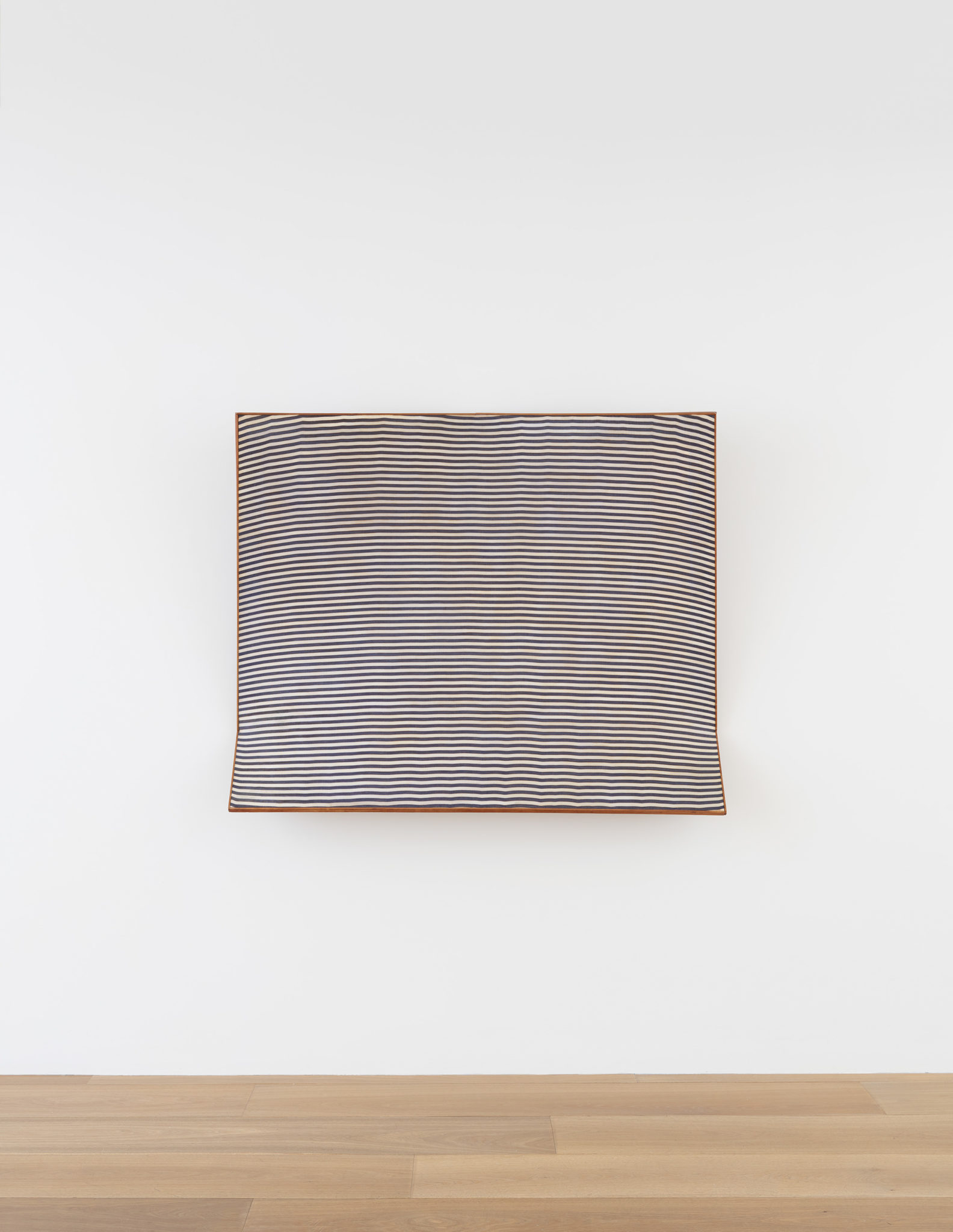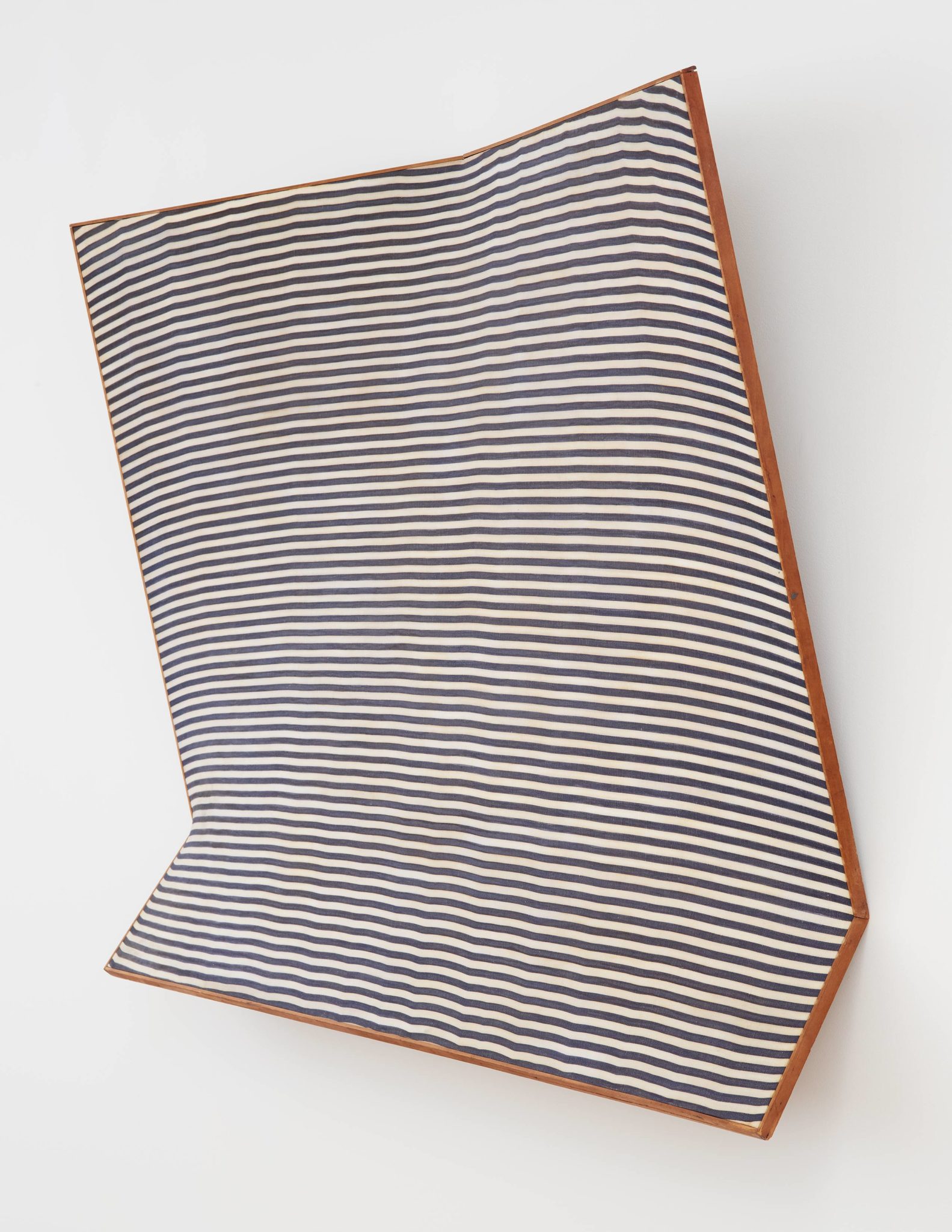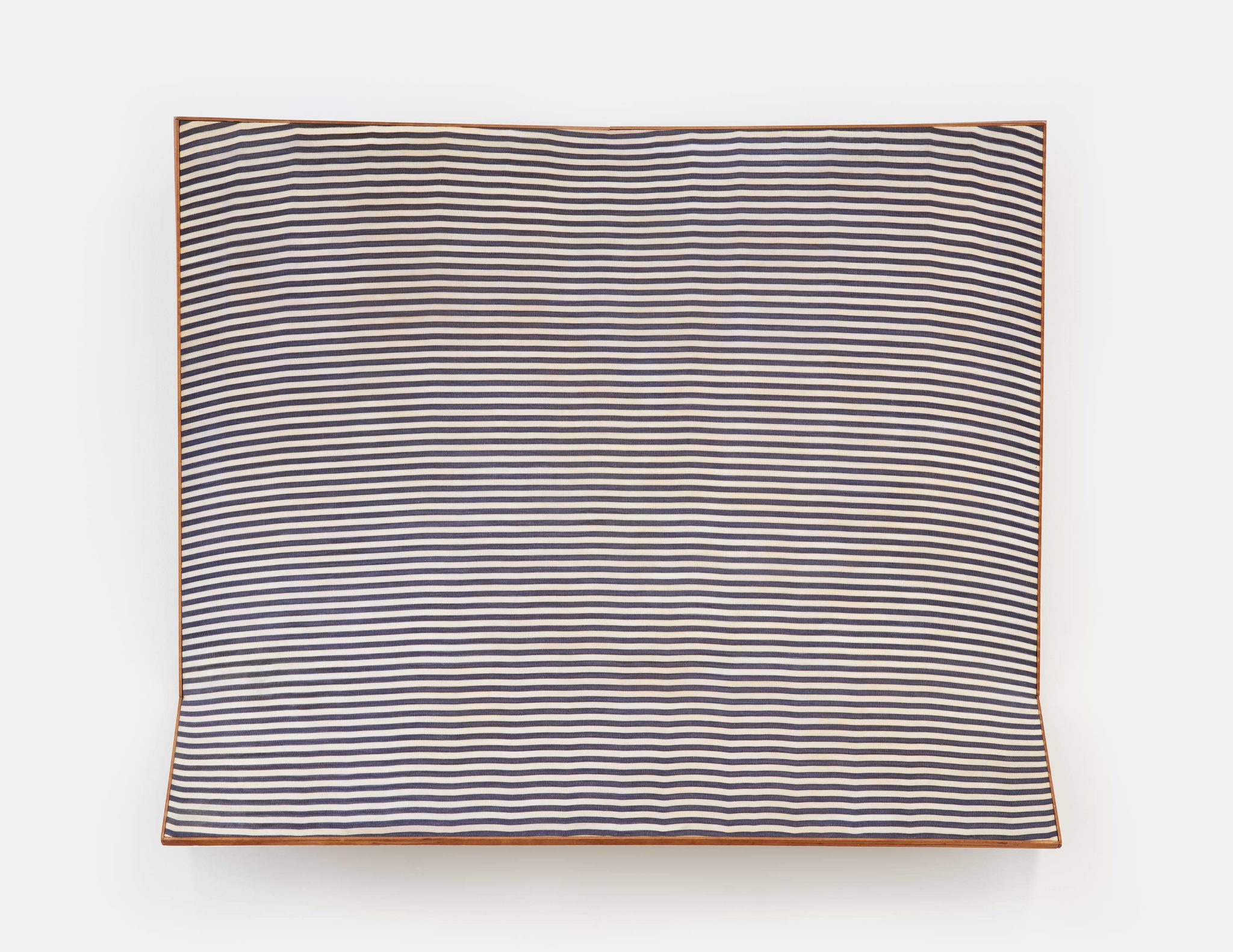Enrico Castellani
Superficie rigata, 1961
Shaped canvas
50 3⁄8 x 59 1⁄2 x 10 5⁄8 inches (128 x 151 x 27 cm)
Signed and titled l. Fontana / 55 (bottom right)
© 2018 Enrico Castellani / Artists Rights Society (ARS), New York / SIAE, Rome
Only the possession of an elementary entity, a line, an indefinitely repeatable rhythm or monochrome surface, is necessary to give the works the concreteness of the infinite and subject them to the influence of time, the only conceivable dimension, yardstick and justification of our spiritual need.
— Enrico Castellani, “Continuit. e nuovo” (Continuity and Newness), Azimuth, no. 2, Milan, 1960.
Superficie rigata (1961) is a rare example of Enrico Castellani’s shaped canvases employing found, commercial canvas. Only eight such works were ever made by the artist, all between the years of 1961 and 1963, a formative period in his seminal exploration of surfaces and space. Though these paintings are notably reminiscent of Op Art, they are more radical for presaging Arte Povera’s use of found materials from the mid 1960s. Of Castellani’s works within this series, only two feature horizontal stripes—this, and a smaller work belonging to the collection of the Fondazione Prada in Milan. The present work is a standout for its gracefully subtle modulations.
In this early painting, white-and-blue-striped canvas is stretched over a wooden stretcher constructed by the artist, creating synthesis between painting, sculpture and space, light and architecture. Though the protrusions of the stretcher are concealed, the work is bordered by a delicate, precise frame, which bolsters the uniform logic of the textile’s alternating lines of color. These push against the inconsistencies introduced by the artist’s scaffold, resulting in nuanced perceptual disorientation. Flaring slightly at the corners, the shape of the canvas bows to create the illusion of a voluptuous pillow; but this gestalt is interrupted by the sharp angles contoured by the frame. Superficie rigata constantly evolves according to shifts in environmental light and the viewer’s gaze, and the angles and stripes together form a conceptual matrix from which a reflection on the nature of the medium of painting can ensue.



